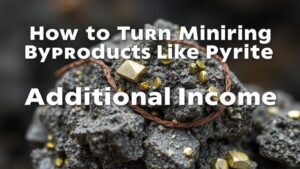How to Optimize Heap Leach Pads for Gold Recovery in Arid Regions
How to Optimize Heap Leach Pads for Gold Recovery in Arid Regions
Heap leaching has become a prominent method for gold extraction due to its cost-effectiveness and simplicity. This technique is especially beneficial in arid regions, where water scarcity necessitates meticulous management of resources. This article discusses strategies for optimizing heap leach pads to enhance gold recovery while considering the unique challenges posed by arid environments.
Understanding Heap Leaching
Heap leaching involves the extraction of precious metals from ore by applying a dilute solution of cyanide or other solvents. solution percolates through the heap, dissolving gold and carrying it to a collection system. This process can take several months, depending on factors such as heap height, ore permeability, and environmental conditions.
Challenges in Arid Regions
Operating heap leach pads in arid locations presents several challenges, including:
- Water Scarcity: Limited access to water sources makes it difficult to maintain optimal leaching conditions.
- High Evaporation Rates: Increased water evaporation can lead to inefficient leaching and concentrated solutes that might precipitate.
- Temperature Extremes: Fluctuations in temperature can affect both the leaching chemistry and microbial activity.
Optimizing Heap Leach Pads
To maximize gold recovery, several optimization strategies can be employed:
1. Water Management
Efficient water management is critical in arid regions. Utilizing techniques such as:
- Recycling Water: Useing a closed-loop system for process water can help minimize water loss.
- Rainwater Harvesting: Collecting rainwater during rare precipitation events can supplement water supplies.
2. Heap Design
Designing the heap to improve permeability and drainage can enhance leaching efficiency. Factors to consider include:
- Heap Height: Limiting heap height can promote better liquid distribution and reduce the risk of compaction.
- Layering Technique: Alternating ore layers with larger, more porous materials can facilitate increased percolation of the leaching solution.
3. Use of Additives
Introducing chemical additives can greatly influence the leaching process. For example:
- pH Adjusters: Modifying the pH can enhance the solubility of gold and improve recovery rates. For example, maintaining a slightly alkaline environment can optimize cyanide effectiveness.
- Microbial Enhancements: Utilizing bioleaching techniques with specific microbes can help dissolve metals more efficiently under arid conditions.
Case Studies: Successful Useations
Several companies have successfully optimized heap leach pads in arid regions. For example, the Goldfields Limited operation in Australia utilized advanced water recycling and heap design modifications. As a result, they increased their recovery rates by approximately 15% over three years.
Monitoring and Evaluation
Continuous monitoring of heap leach pads is essential to ensure optimal performance. This includes:
- Regular Sampling: Conducting geochemical assays at various heap locations to assess gold concentration levels.
- Performance Metrics: Tracking recovery rates and adjusting leaching parameters based on real-time data.
Conclusion and Actionable Takeaways
Optimizing heap leach pads for gold recovery in arid regions requires a multifaceted approach, focusing on efficient water management, heap design, and the use of chemical additives. Both existing operations and new projects can benefit from implementing these strategies, ultimately leading to increased recovery rates and more sustainable practices. Moving forward, operators should prioritize innovation and adaptation to successfully navigate the challenges posed by arid environments.


